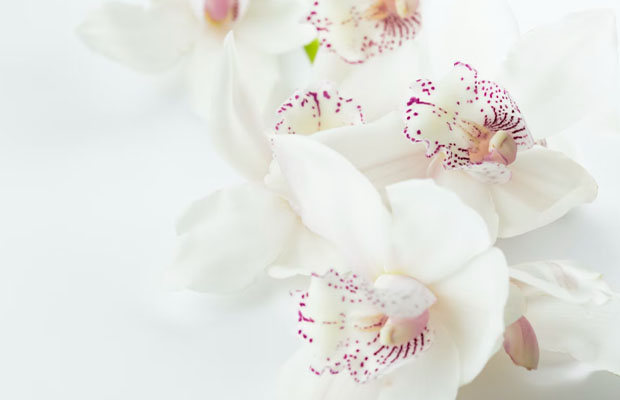
Due to their beautiful flowers, orchids make excellent additions to any garden. In addition to their aesthetic appeal, orchid flowers have a pleasant fragrance. The flower spikes on the stem are where the flowers open.
The stem’s spikes are where flower buds and actual flowers develop. If you’re a beginning orchid collector, you may have heard a little bit about how challenging it is to induce orchids to bloom again.
How to make an orchid grow a new spike? Keeping them in a bright location with indirect sunlight, fertilizing the orchid, cutting off the withered spikes, water adequately, and induce the blooming in winter.
We outline everything you need to know about growing orchids and encouraging them to produce new spikes in this article.
Table of Contents
How To Know My Orchid Has A New Stem Growing?
So, let’s start by defining spikes. Where the flowers and buds develop on an orchid are called spikes. Occasionally, spikes are mistaken for aerial roots. The roots of orchids, which require little soil, are typically less green and have a rounder tip. Spikes, on the other hand, are pointy, thin, and have tips that resemble mittens. They can grow to a height of four to six inches.
How Long Does It Take A New Orchid Spike To Grow?
A spike on your orchid may take three months to grow, so it helps to be patient if you see one developing. You must first have a healthy orchid in order to produce healthy spikes. In a perfect world, you’d provide your plant with an abundance of bright, indirect light, plenty of water, and moderate feeding.
In general, a plant is less likely to produce numerous spikes the younger it is. Due to genetic differences, some orchids may be genetically predisposed to growing multiple spikes, while others will only produce one set of blooms per growing season. Usually, spent flowers cause spikes to wither, but occasionally, this may not happen.

How To Make An Orchid Grow A New Spike?
I need to do a number of things to encourage my orchids to develop new spikes and bloom again:
1. Fertilize Monthly
After the orchids have shed their final flowers, fertilize them once a month with orchid fertilizer.
To avoid hurting my plants and make sure they are in their best health, it is crucial to use fertilizer according to the manufacturer’s instructions.
Keep in mind to place the orchid in a space with both direct and indirect light.
2. Cut The Flower Spike
Orchid flower spikes can either be cut or left alone.
For cutting my orchid spikes, I have three options.
- The possibility that the flowers will bloom again allows me to leave the spike uncut.
- Cut the spike at an angle between the third and fourth nodes from the bottom using sterilized clippers, razor blades, or sharp scissors. Only Phalaenopsis orchids can be grown successfully using this method. Additionally, there is a slim chance that it will aid in the sprouting of my spikes.
- Razor blades pointed scissors, or sterile clippers should be used to completely cut the flower spike. Trim the spike an inch and a half from the plant’s base. It is the best strategy because it aids in the root development of my plant and allows it to restart. When the spike turns brown and yellow, I must also use this technique. I might need to remove the spike at the base if I have an orchid species other than phalaenopsis.
3. Water Regularly
In accordance with the care tag’s instructions, I also need to water my orchids.
While mini phalaenopsis require watering every 7 to 10 days, standard-sized phalaenopsis require it every 10 to 14 days.
Watering my orchids less is usually better. Before watering the orchid, make sure the potting medium is almost dry to avoid overwatering and product systems.
4. Wait For New Leaves To Grow
Before we start spiking, we need to wait a few months after the flower spike has been cut.
My orchids have recovered and are prepared to bloom, as evidenced by a fresh, fully grown leaf.
The new leaves on orchids are typically equal to or larger than the existing leaves.
5. Place Your Orchids Outside
Place your orchids outside in the shade if the weather is suitable, and Mother Nature will take care of the rest.
Your plant will typically bloom if there is a drop in nighttime temperature for a few weeks.
All it takes is a few weeks of nights with temperatures in the roughly 55–60°F range (plus or minus a few degrees).
Make sure the temperature doesn’t drop too low by keeping an eye on the weather.
Bring your plants indoors if there is even a remote chance that it will fall below 50F.
6. Lookout For A New Flower Spike
After about a month, a fresh flower spike emerges. It initially has the appearance of an aerial root.
I can move the Orchard back to a location with indirect light and a room temperature of roughly 65 to 75 degrees Fahrenheit once the spikes begin to appear.
After a few more months, the orchid will start to grow tall and produce new flowers.
As soon as the spike reaches a height of about 5 inches, I might need to support the orchid with a steak and a loose tie.
If I don’t get a flower spike after a few months, try changing the location of my choice. It might be due to a lack of adequate lighting or cool temperatures.
How Can We Identify The Orchid Spike?
I need to identify my flower spike first before I can help it grow. It is helpful, particularly when I need to remove the withering spikes.
They are frequently mistaken for aerial roots by people as well.
On the sides of their plant, the orchid spikes spread out easily. Each leaf is under and above the sprout that is present in the space between them.
They also resemble mittens due to their pointed, thin shape.
While the roots of orchid spikes are also green, they lack the glossy appearance of aerial roots.
In the fall or winter, when it is cold outside, flower spikes on my phalaenopsis orchids will appear.
Aerial roots of orchids tend to incline in all directions, whereas the spikes typically grow in the direction of the light source.
In contrast to the aerial roots, which have rounded tips, the new sprouts of orchard spikes are pointed.
Conclusion
The flowers on orchids are appealing and fragrant. The flower spikes may wither after the orchids bloom, in which case I might prefer to encourage another bloom to remove the plants altogether.
New spike development in orchids can be somewhat slow. It takes about 2 to 3 months for the orchids to develop new spikes. Light and temperature will have a major impact on how quickly things develop.
Other Posts You Might Like: How To Spike A Volleyball?


